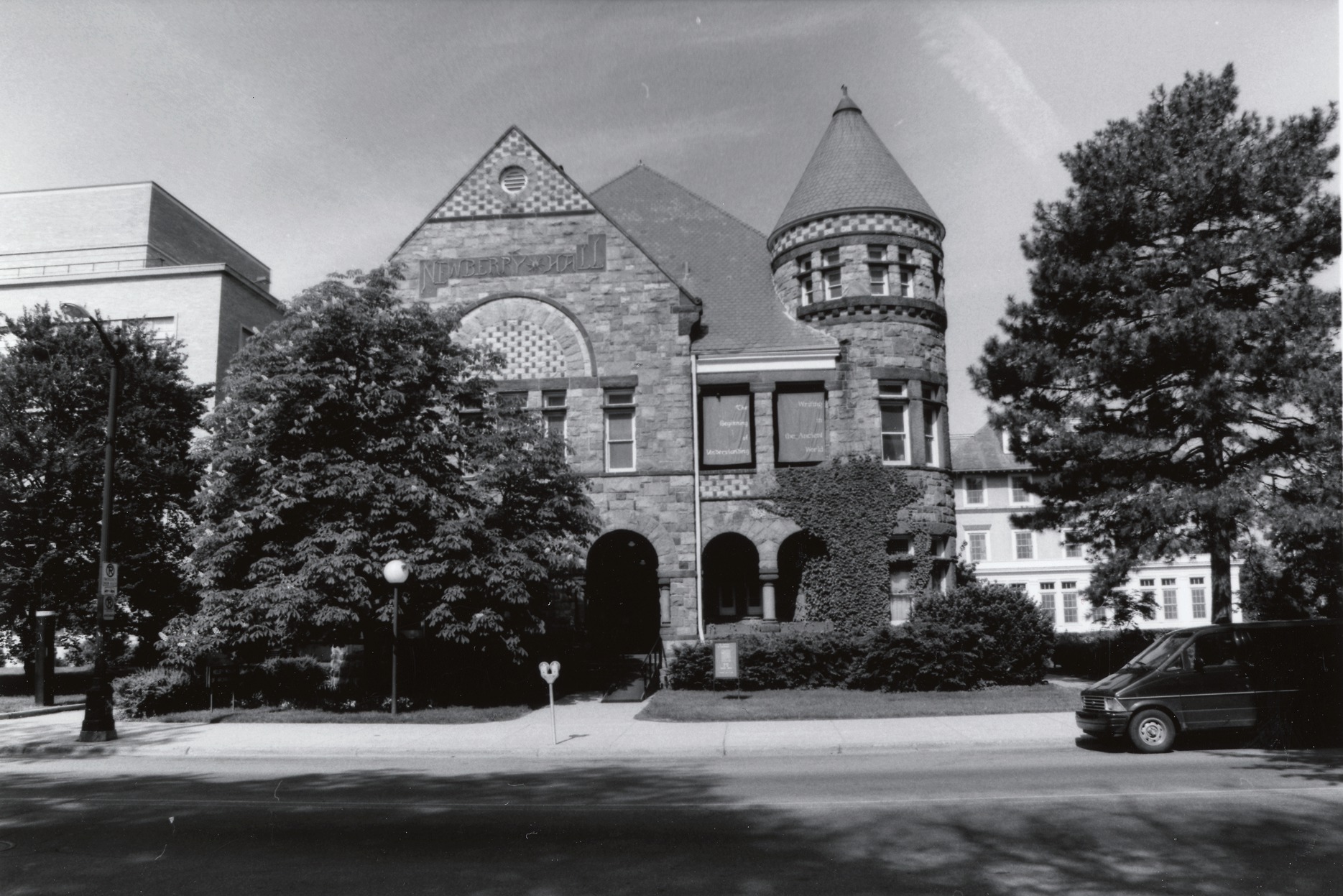Newberry Hall, 1888

Year
1888
434 South State Street
Newberry Hall, 1888
Creator: Spier & Rohns
This picturesque building was designed by architects Spier and Rohns for the Students' Christian Association as the headquarters for its work on campus. The building's name, Newberry Hall, appears on the east gable end, in memory of railroad magnate John S. Newberry (class of 1847), whose widow, Helen, contributed a substantial part of the building fund in his name.
The building material is fieldstone, trimmed with Ohio blue stone and Forest City brown stone. A staircase of oak leads to the second story, originally a hall seating 550 persons, which was embellished with a beautiful Tiffany window. The grand hall is now divided into smaller rooms. The Romanesque design with its heavy stone work, round arches, and decorative detail demonstrates the influence on architects of the work of H. H. Richardson. They also followed Richardson's pioneering use of cast-iron columns and Carnegie steel beams supporting wood joists and floors.
The Student Christian Association was reorganized in 1904 as the YMCA and the YWCA and affiliated with the national organizations. On campus the title Student Christian Association was maintained, with the same Board of Trustees governing both organizations. Newberry Hall became the home of the YWCA. By 1919 the building was again available to all religious groups within the university community. In 1920 the SCA could no longer afford to maintain Newberry Hall, and the University was allowed to hold classes in the building in exchange for maintenance. The archaeological collections gradually became housed in the building and in 1937 Newberry Hall was sold to the University. Latin Professor Francis W. Kelsey, in his constant search for papyri, had noted the promising ruins at Karanis, Egypt. In 1923, he led an expedition to excavate the site. The Francis W. Kelsey Museum of Archeology was established to hold the many treasures recovered by that expedition. It now houses over 100,000 of the finest of art and archaeological artifacts.